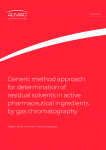AI revolution in pharma: Qinecsa's James Bellamy unveils groundbreaking PV tech insights
James, who joined Qinecsa three years ago after stints at Genpact and Accenture, discussed the company's mission, products, and the critical role of AI and machine learning (ML) in shaping the future of PV.
Qinecsa's mission and offerings
Qinecsa is a PV technology and services company dedicated to enhancing patient safety. “We have a suite of end-to-end SaaS products covering the entire pharmacovigilance lifecycle," James explained. These products, combined with tech-enabled PV services, support the company's vision of creating a safer and healthier world for patients. Qinecsa's approach is highly collaborative, working with both large pharmaceutical companies and smaller, emerging firms. "We offer tailored solutions for our bigger customers and multi-tenant solutions for the smaller companies,” James added.
Core products
Qinecsa's core products are designed to streamline various aspects of PV. James elaborated on three main offerings:
Reportum: This product focuses on the digital capture of adverse events to improve data quality. “We aim to increase quality by having healthcare professionals, patients, and consumers report cases directly into forms.”
Halo PV: A comprehensive case processing solution that manages everything from intake to signal detection. “It automates the extraction of data from both structured and unstructured sources, streamlining the entire case processing workflow.”
Vigilance Workbench: A best-of-breed signal detection and benefit-risk management solution. “It allows companies to analyze their safety data using various algorithms and visualization tools to detect and manage potential signals.”
Unique selling proposition
When asked about Qinecsa's differentiators, Bellamy highlighted the company's customer-centric approach. “We're very partner-oriented, very easy to do business with, and always put our customers first," he said. Qinecsa's solutions are designed to scale up or down, making best-in-class features accessible to both large and small companies. "We provide value that makes sense for startups and established firms alike,” James added.
Addressing industry needs
Life sciences organizations seek to achieve three main outcomes when selecting PV technology providers: cost reduction, risk management, and innovation. James outlined how Qinecsa addresses these needs:
Cost: “Our SaaS-based solutions come with pre-packaged best-of-breed configurations that minimize implementation time and costs,” James explained. This approach allows companies to quickly adopt new technologies without extensive customization.
Risk: By consolidating processes into a single, auditable solution, Qinecsa helps companies manage regulatory risk. “Eradicating the use of ancillary systems like spreadsheets and emails is crucial for containing risk,” he added.
Innovation: Qinecsa's strong PV pedigree enables it to identify and implement the most effective emerging technologies. “We focus on where innovation can truly improve patient safety,” James said.
The future of PV technology
James is optimistic about the transformative potential of AI and ML in PV technology. “AI and ML are becoming ubiquitous, particularly in case intake and processing,” he said. These technologies help automate effort-intensive tasks, speeding up data entry and quality control. James foresees a gradual increase in the trust and adoption of AI for higher-value tasks, such as assessing data and generating narrative summaries for reports. “Machine learning techniques could also transform signal detection and predictive signaling in real-world evidence datasets,” he said.
Data security and compliance
Addressing the challenges of data security and regulatory compliance, James highlighted the importance of robust information security systems. “We have a dedicated chief information security officer and integrate information security management systems with our quality management systems,” he said. This ensures that data security is a priority from the outset of product design through to implementation and operation.
Human in the loop
Despite the advancements in AI, Bellamy stressed the critical role of human oversight. “Having a human in the loop is essential, especially in this industry where algorithms are not perfect,” he said. Humans not only validate the outcomes of AI algorithms but also provide feedback to improve them. “This continuous feedback loop is vital for refining AI accuracy and effectiveness,” James added.
Looking ahead
While James couldn't share specific details about future product developments, he confirmed that Qinecsa's focus will remain on integrating AI and ML into their product suite. “Continuing to innovate and bring these technologies into our products is a key priority,” he said.
In conclusion, James Bellamy's insights provide a comprehensive view of how Qinecsa is leveraging AI, ML, and innovative solutions to advance pharmacovigilance. By balancing technological innovation with human expertise, Qinecsa, he says, is well-positioned to meet the evolving needs of the pharmaceutical industry and enhance patient safety.


























